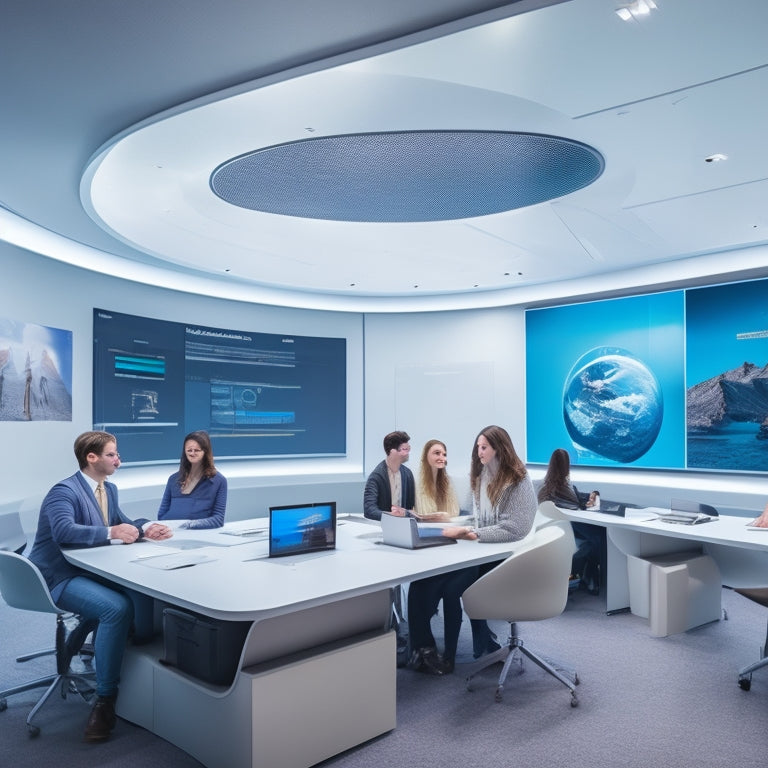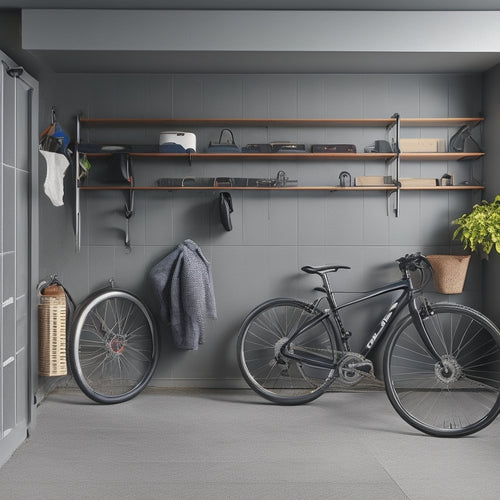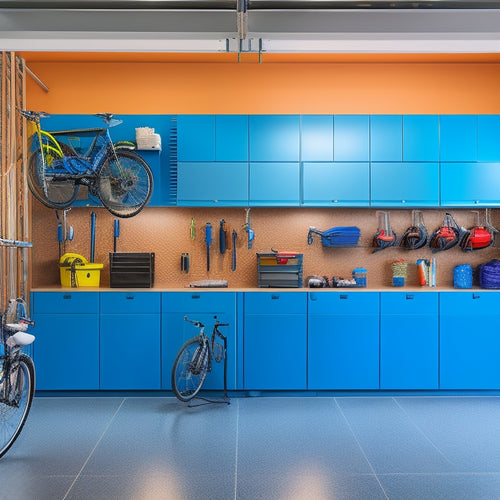
VIRTUAL LEARNING TRANSFORMS DESIGN EDUCATION'S FUTURE
Share
We're charting a new era of design education, where virtual learning has become the norm. We've adapted to remote challenges by prioritizing circular design, leveraging tools like Zoom and Miro, and focusing on human-centered approaches. We're redefining community engagement through socially distant interactions, DIY methods, and hybrid learning models. As we overcome remote learning hurdles, we're embracing opportunities for decentralized design tools, inclusive pedagogy, and sustainable solutions. The future of design education is taking shape, and we're just beginning to uncover its transformative potential – stay with us to explore the innovative possibilities unfolding ahead.
Key Takeaways
• Virtual learning enables design students to develop essential skills in remote collaboration, circular design, and open design approaches.
• Hybrid learning models and decentralized design tools are being explored to reimagine community engagement and design education.
• Distributed design opportunities transform product development, fostering sustainable, accessible, and community-driven solutions that cater to diverse needs.
• Design education now prioritizes technology, sustainability, and social responsibility, ensuring graduates are prepared for the challenges of a rapidly changing world.
• Emphasis on design resilience, adaptability, and resourcefulness helps students overcome remote learning challenges and thrive in a collaborative future.
Adapting to a New Reality
As we navigated the uncharted territory of remote learning, we rapidly adapted our design education approach to prioritize distributed and circular design, ensuring our students could continue creating innovative solutions despite the physical distance.
We leveraged remote collaboration tools, such as Zoom and Miro, to facilitate virtual teaching and foster design resilience. By embracing open design approaches, we empowered students to design anywhere, reducing the reliance on physical infrastructure.
This shift enabled us to focus on the human aspect of distributed design, acknowledging the inequalities in access to tools and space. Through simplified workshops and DIY methods, we addressed these limitations, ensuring our students remained engaged and resourceful in the face of adversity.
Community Engagement Redefined
We pivoted our community engagement strategies to prioritize socially distant interactions, designing kits and workshops that facilitated hands-on making from the comfort of students' own homes.
By redefining engagement, we fostered community connections that transcended physical boundaries. Our kits and workshops enabled students to collaborate and share ideas, despite being apart.
This shift allowed us to address the challenges of socio-economics in remote learning, ensuring inclusivity and accessibility for all.
As we navigated this new landscape, we discovered innovative ways to boost morale and address changing community dynamics. Through hands-on making, we brought people together, redefining what community engagement means in the virtual era.
The Future of Design Education
By reimagining community engagement, we're now poised to redefine the future of design education, where distributed design platforms and virtual learning environments converge to create a new era of collaborative, inclusive, and accessible design education. We're committed to developing innovative teaching methods that cater to diverse learning styles and needs. Our evolving curriculum will focus on the intersection of technology, sustainability, and social responsibility.
Here are three key areas we're exploring:
-
Hybrid Learning Models: Blending virtual and in-person learning experiences to create a seamless educational journey.
-
Decentralized Design Tools: Developing open-source design platforms that promote collaboration and accessibility.
-
Inclusive Design Pedagogy: Fostering a culture of empathy, diversity, and equity in design education.
Overcoming Remote Learning Challenges
How can we guarantee that remote learning environments effectively bridge the gap between design intention and physical manifestation?
We've found that remote collaboration is key to overcoming remote learning challenges. By leveraging digital tools, we can facilitate seamless communication and feedback loops, ensuring that our design intentions are accurately translated into physical prototypes.
Moreover, we're emphasizing design resilience by encouraging students to adapt and pivot in response to unexpected challenges. This not only fosters resourcefulness but also prepares them for the realities of distributed design.
Embracing Distributed Design Opportunities
As we navigate the new landscape of design education, leveraging distributed design opportunities transforms our approach to product development, allowing us to create more sustainable, accessible, and community-driven solutions.
We're embracing the potential of remote creativity, where design collaboration knows no borders. By harnessing the power of digital tools and virtual platforms, we can:
-
Foster global connections and diverse perspectives, enriching our designs with unique insights.
-
Develop innovative solutions that cater to diverse needs and contexts, promoting inclusivity and social impact.
-
Cultivate a culture of resourcefulness and adaptability, as we navigate the complexities of remote collaboration and distributed design.
Through this shift, we're not only redefining the future of design education but also shaping a more resilient, empathetic, and sustainable world.
Frequently Asked Questions
How Can Virtual Teaching Platforms Ensure Equal Access for Students With Disabilities?
We're committed to ensuring equal access for students with disabilities by conducting accessibility audits and designing inclusive interfaces that cater to diverse needs, fostering a collaborative and innovative virtual learning environment.
What Role Do Virtual Reality Tools Play in Enhancing Distributed Design Education?
As we explore the uncharted territories of distributed design, we utilize virtual reality tools to craft immersive simulations and interactive models, enabling students to navigate complex projects with precision, fostering a collaborative and innovative design ecosystem.
Can Online Workshops Effectively Replicate the Hands-On Experience of In-Person Making?
We're exploring whether online workshops can replicate hands-on experience, leveraging digital craftsmanship to simulate tactile interactions, and embracing creative constraints to foster innovative problem-solving in the virtual domain.
How Do Remote Learning Environments Impact Students' Mental Health and Well-Being?
We're acutely aware that remote learning environments can exacerbate social isolation, leading to emotional burnout; we're developing strategies to counteract this, fostering virtual connections and community engagement to promote students' mental health and well-being.
What Are the Potential Environmental Benefits of Shifting to Distributed Design Practices?
As we reimagine design practices, we envision a future where distributed design reduces carbon footprints, promoting sustainability gains through locally sourced materials and minimal transportation needs, ultimately creating a greener, more resilient design ecosystem.
Related Posts
-

Large Wall Hooks to Maximize Garage Space
You can effectively double your garage's storage capacity by installing large wall hooks that keep items off the floo...
-

Maximum Capacity Tool Boxes for Heavy-Duty Use
You need a maximum capacity tool box that can withstand the rigors of heavy-duty use, protecting your essential tools...
-

Top Garage Storage Bins for Organization and Style
You can enhance your garage's style and organization with the right storage bins. Top brands like Rubbermaid, Suncast...


